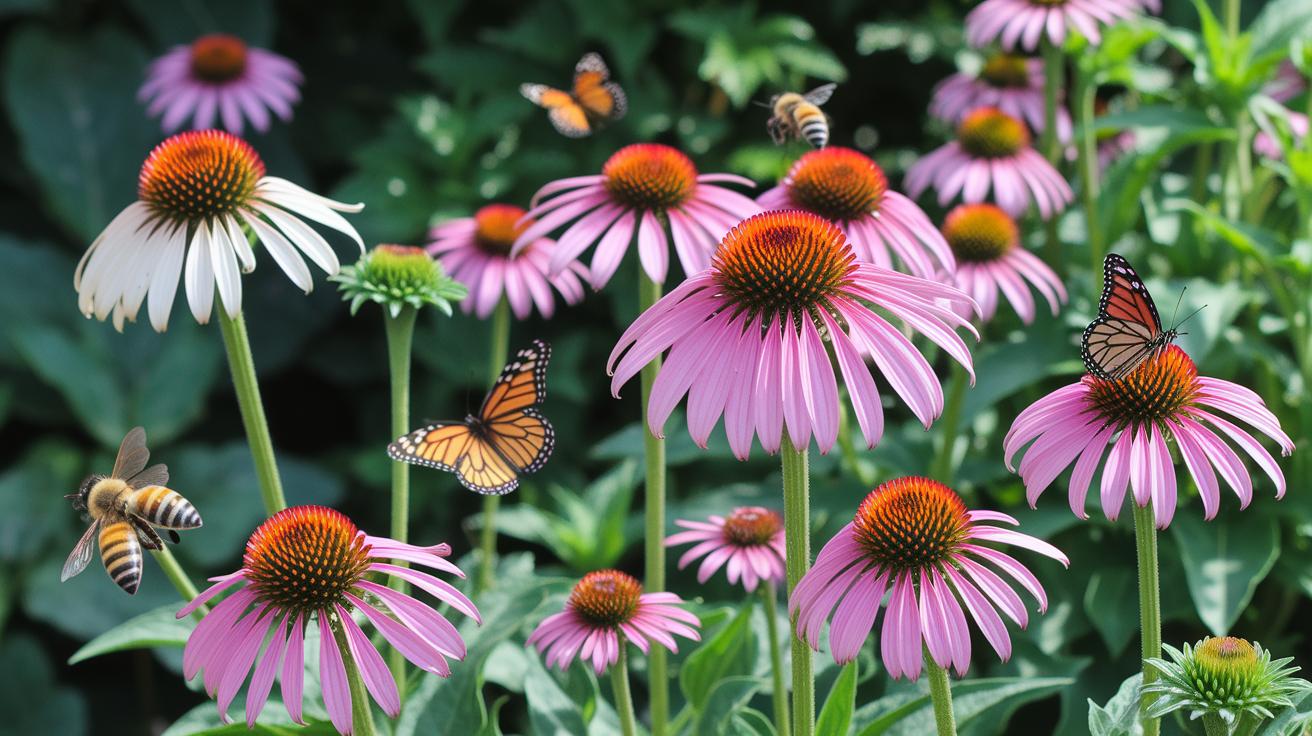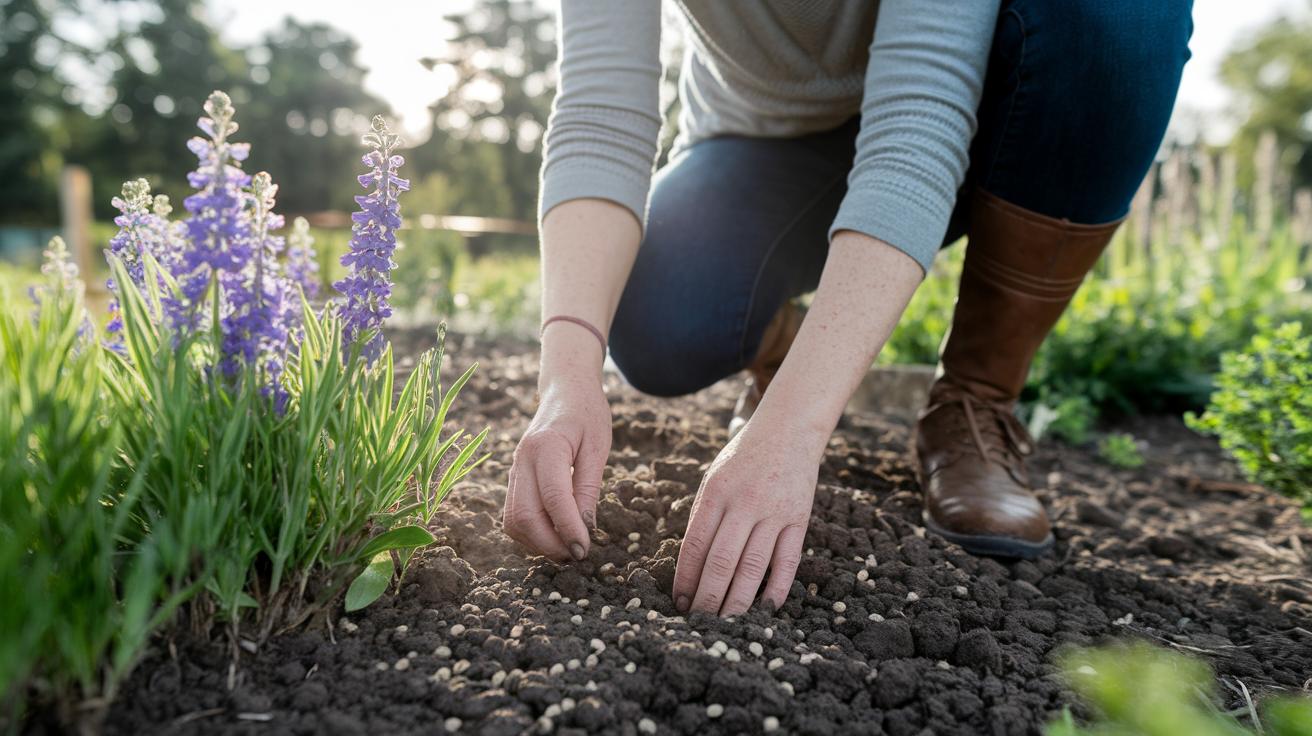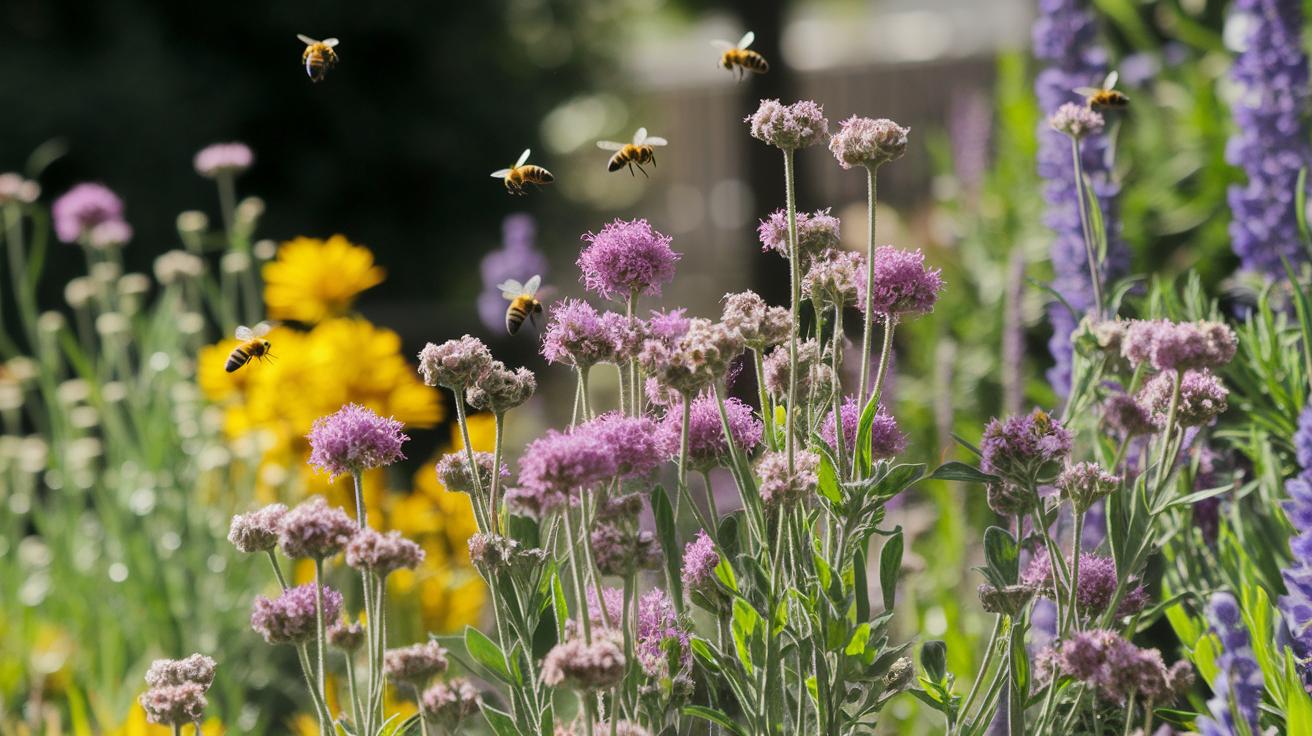Best Native Plants for Pollinator Gardens Breathtaking Bloom
Did you know nearly one-third of our meals come from blossoms visited by busy bees and fluttering butterflies? I love the soft hum of bees drifting through bright petals. It’s a sweet soundtrack for any morning in the garden.
By choosing native flowers that thrive in your USDA hardiness zone (the climate area where plants grow best), you’re fitting the right keys to your garden’s locks. You’ll water less and enjoy stronger blooms bursting with color. And those winged guests will dance in your yard from dawn till dusk. By the way, have you ever watched a monarch rest on a milkweed leaf? It’s pure magic.
Ready to bring more buzz to your backyard? Let’s dive into my top flower picks for spring, summer, and fall – so you can keep your garden vibrant and full of pollinators all season long.
Best Native Plants for Pollinator Gardens Breathtaking Bloom
Planting native flowers by USDA hardiness zone (climate area based on lowest winter temps) is like matching keys to locks in your garden. When they fit, you'll bloom stronger and need less fuss. Plus, bees, butterflies and hummingbirds will pop in all season long.
Early spring bloomers set the stage for a busy garden. Redbud (Cercis canadensis) in zones 4 to 8 pops open rosy clusters just as honeybees wake up. It loves well-drained soil and can handle full sun or a bit of shade.
Mid summer is coneflower time! Echinacea purpurea grows wild in zones 3 to 9 and paints beds pink and purple. You can almost hear the buzz of bumblebees.
Fall brings goldenrod and asters for that last hit of color. Goldenrod (Solidago spp.) in zones 4 to 9 stands tall in sunny spots and sips little water once it's settled. Asters (Symphyotrichum spp.) love moist loam (mixed soil with sand and clay) and they draw hummingbirds and late butterflies.
Most pollinator plants crave full sun, which is six or more hours of warm light a day. Some shrubs are happy in part shade. Sandy soil drains fast, while loam (mixed soil with sand and clay) holds moisture. Once your plants settle in, they can handle short dry spells.
Mix plant heights and bloom times to keep your garden buzzing. Put short blooms in front, medium plants in the middle, and tall shrubs at the back. By the way, my cat loves sunning on the raised bed. Back to the blooms, this layout keeps pollinators exploring every level.
| Region/USDA Zone (coldest temps) | Native Plant | Bloom Time | Sun / Soil / Water | Pollinators |
|---|---|---|---|---|
| Zone 4–8 (Mid-Atlantic) | Redbud (Cercis canadensis) | Early spring | Full sun or part shade, well-drained loam (mixed soil with sand and clay), moderate | Honeybees, bumblebees |
| Zone 3–9 (Great Plains) | Coneflower (Echinacea purpurea) | Mid summer | Full sun, sandy to loamy soil, low to moderate | Bees, swallowtails |
| Zone 4–9 (Northern US) | Goldenrod (Solidago spp.) | Late summer to fall | Full sun, sandy well-drained soil, drought-tolerant | Monarchs, solitary bees |
| Zone 5–8 (Eastern Woodlands) | Aster (Symphyotrichum spp.) | Fall | Full sun or part shade, moist loam (mixed soil with sand and clay), moderate | Hummingbirds, butterflies |
Top Native Perennials and Shrubs for Pollinator Gardens

Perennial flowers and shrubs (plants that come back every year) keep bees, butterflies, and hummingbirds fluttering through your beds. Ready to add some wildlife-friendly color?
-
Echinacea purpurea
This one blooms pink-purple daisy heads in mid summer. It thrives in full sun and well-drained soil (soil that lets water pass through easily). Give it moderate water, and you’ll see bumblebees and swallowtails gather around. -
Bee balm varieties (Monarda spp.)
Think bright red, pink, or lavender clusters that smell amazing. Bee balm grows best in full sun or part shade and needs moist but well-drained soil. By the way, my cat loves sunning on my bee balm patch. -
Common milkweed (Asclepias syriaca)
Soft pink flower balls appear from mid to late summer. It prefers full sun and sandy or loamy soil (a mix of sand and clay). Keep the soil a bit moist, and watch monarch caterpillars munch away! -
Butterfly weed (Asclepias tuberosa)
Fiery orange blooms light up hot, dry spots. It loves sandy soil and barely needs water once it’s settled. Monarchs and skippers flock here for a feast. -
Phlox paniculata
Enjoy fragrant clusters in mid to late summer. Phlox likes moist loam (soil mixed with sand and clay) and partial shade. Butterflies can’t resist its perfume. Wow. -
Viburnum shrubs
Early spring flowers feed honeybees first thing. Viburnums tolerate average garden soil and part shade. With moderate watering, birds join in the fun too. -
Spicebush (Lindera benzoin)
Tiny pale yellow blooms in early spring. It does well in shade to part sun and prefers moist soil. Native bees and early butterflies arrive before anything else wakes up.
Most perennials need soil that drains well, but phlox likes a bit more moisture. Group plants by water needs so you’re not hauling hoses all day. Happy planting!
Best Native Plant Layouts for Pollinator Gardens
Small yards or balcony pots really come alive when you choose five to seven native plants that bloom at different times. Picture a window box overflowing with violet petals in spring, coneflowers lighting up midsummer, and asters waving in the fall breeze. Insects will always find a tasty sip of nectar.
-
Small space pollinator garden
• Use pots or window boxes so you can move plants around
• Mix early, mid and late bloomers for nonstop color
• Group by height and hue for a cheerful, layered look -
Container garden natives
• Pick shallow pots, native roots are often shallow (spread just under the soil)
• Add milkweed (a must for monarch caterpillars)
• Blend bee balm and coreopsis for blooms from June through frost -
Raised bed selections
• Back row: tall grasses or native shrubs that sway in the breeze
• Middle row: medium perennials like penstemon or black‐eyed Susan
• Front row: low flowers such as creeping phlox for easy viewing -
Large plots with layered habitats
• Turn your fence line into a mini meadow filled with goldenrod and ironweed
• Plant a shrub border along walkways for nesting spots
• Let asters edge your lawn so butterflies can land right off the grass -
Companion planting ideas
• Tuck dense groundcovers under taller shrubs to block weeds
• Weave in aromatic mint or thyme to help keep pests away
Have you ever watched a bumblebee’s fuzzy legs dusted in pollen? When you skip pesticides, you give bees and butterflies a safe place to forage. If you’d like a simple sketch of these layouts, check out how to design a pollinator garden.
Propagation and Maintenance for Best Native Pollinator Plants

Getting your pollinator garden going is all about picking how you’ll multiply plants. You can start seeds indoors in small pots. Or you can split clumps of plants in spring or fall. And you could even try softwood cuttings (young stems that root quickly).
- Start seeds with cold-moist stratification (letting seeds sit in cold damp conditions for 30 to 90 days). It gives tough native seeds the winter chill they need.
- Divide plants (split roots into two or more pieces) in early spring or fall. Each piece grows its own shoots.
- Take softwood cuttings (young green stems) from shrubs like spicebush. Stick them in a damp mix and watch them root fast.
You can also sow seeds right in the ground (direct sow). It’s easier and cuts out transplant shock (when plants get stressed moving). But if you start indoors, follow a seed starting guide. It helps you avoid leggy seedlings (plants that get too tall and thin).
- For direct sow: in early spring or late fall push seeds about 1/4 inch into the soil. Space them 12 to 18 inches apart.
- For transplanting seedlings: wait until after the last frost. Then harden off seedlings (let them get used to outdoor weather) for one to two weeks. After that, plant them in a sunny spot.
Loosen your soil by mixing in compost (decayed organic matter that feeds plants) or aged leaf mold (broken-down leaves). Keep going until it feels like a fluffy blanket under your fingers. That means you have loam (soil that drains well). Check for a soil pH of 6.0 to 7.0 so nutrients stay easy for thirsty roots to grab.
- Mulch with 2 inches of shredded bark or straw. It locks in moisture and keeps weeds from popping up.
- Water new plants deeply once a week during their first season. Then ease up for drought-loving natives.
- Pinch off old blooms. That tells plants to make more flowers. And hold off on extra fertilizers. Too much can give you leaves instead of blooms.
- Let seed heads, stems, and grasses stand through winter. They give bugs a cozy place to hide. Only tidy up in early spring.
Now that you’ve got seed-starting tips and direct sow tricks, you’ll see tiny seedlings turn into busy pollinator magnets. A bit of division here. Some gentle transplanting there. And easy soil prep. All of it sets up deep roots and bright blooms. Wow. You’ll even catch me smiling when I hear bees buzzing while I water.
Sourcing and Ecological Benefits of Native Pollinator-Friendly Plants
Ever thought about growing plants that really belong in your backyard? Start by finding a native plant nursery or a local seed supplier directory near you. That way, your flowers and grasses come from your own region and settle in faster.
Local growers usually print germination rates on the seed packs and note if seeds need cold-moist stratification (a chill period to help them sprout). That little detail saves you from guessing – you get steady sprouts you can pot up or sow right outside. Oops, I once spilled seeds all over my patio – now I always label my packets. Have you ever felt the thrill of seeing your first seedlings pop through the soil?
Once those natives take root, their deep taproots (a long main root) and fibrous side roots naturally break up hard soil. You can almost feel the earth softening as rain soaks in. And earthworms and microbes will start thriving under the surface.
When the blooms open, you’ll spot honeybees buzzing from flower to flower, bumblebees rumbling around, butterflies drifting on the breeze, and even hummingbirds darting for nectar. Your garden quietly turns into a mini wildlife refuge. Layers of grasses, shrubs, and perennials offer snacks and shelter from spring through fall.
- Deep roots boost soil health and structure
- Native blooms feed local bees, butterflies, and hummingbirds
- Pollinator gardens help nearby fields get better crop pollination
- Skipping chemical fertilizers grows a diverse soil microbiome (tiny organisms that keep soil alive)
- Layered plant habitats give insects and small birds cozy hideouts
Planting this way gives back in a big way. Your patch of flowers doesn’t just look pretty – it helps a whole network of creatures thrive.
Final Words
In the action, we pinpointed top picks for each USDA zone, from early spring redbuds to fall asters.
Next we explored reliable perennials and shrubs, sketched easy layouts for pots or raised beds, and shared simple sow-to-harvest steps with mulching and watering tips.
Finally, we pointed you to local nurseries and highlighted how native roots boost soil and wildlife. Your backyard is ready to thrive with the best native plants for pollinator gardens.
Happy planting!
FAQ
Why choose native plants based on USDA zones?
Choosing native plants matched to USDA zones boosts survival rates and pollinator visits by fitting local climate and soil. You’ll see more bees, butterflies, and hummingbirds thriving in your garden.
What spring native plants attract pollinators?
Spring native plants like redbud trees bloom early in Zones 4–8, offering pollen for early bees and butterflies. Their pink flowers light up the garden and feed hungry pollinators warming up.
Which summer-flowering native plants work best?
Summer-flowering natives like purple coneflower (Echinacea purpurea) thrive in Zones 3–9 under full sun. They need moderate water and draw native bees, butterflies, and hummingbirds with bright, long-lasting blooms.
What fall plants provide nectar for pollinators?
Fall nectar sources like goldenrod and asters bloom in Zones 4–9, offering late-season food. They handle varied soils and sun, need moderate water, and help migrating butterflies and bees pack energy stores.
How can I arrange plants in a small pollinator garden?
Arranging 5–7 species with staggered bloom times in pots or small beds ensures steady nectar supply. Place taller plants at the back, shorter ones up front. Group by sun needs for easier care.
How do I start and maintain native pollinator plants?
Starting native pollinator plants involves sowing seeds after cold-moist stratification or dividing clumps in spring. Mulch 2 inches for moisture, water weekly first season, deadhead spent blooms, and leave seedheads for winter habitat.
Where can I buy local native pollinator-friendly plants?
Buying from local native plant nurseries or trusted seed suppliers ensures regional genetics. Check seed packets for germination rates and stratification needs. Local sources often support local pollinators and ecosystem health.
What are the main benefits of native pollinator gardens?
Native pollinator gardens boost biodiversity, support bees, butterflies, and hummingbirds, and improve soil health with deep roots. They also aid local crop pollination and offer a low-maintenance, wildlife-friendly space.







